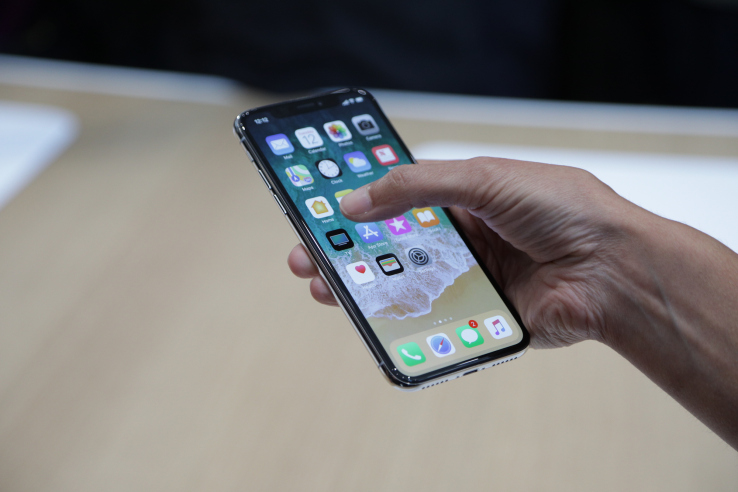The annual launch of the new iPhone lineup is here, and the inclusion of iPhone X may seem a bit confusing.
Learn why Apple may have chosen to use this unique name for its newest iPhone.
It’s no longer a secret. Since a leak just days before the official release, people have known this year’s annual iPhone release will be something special. Apple’s not only launching iPhone 8 and iPhone 8 Plus on September 23, but will offer an additional option which is a mysterious and radical departure from the look of their previous iPhone. Apple calls this new phone, iPhone X. “X” as in the Roman numeral ten. Wait! Is Apple really calling it iPhone 10? What happened to iPhone 9? Is This Just an Apple Marketing Ploy?
It’s almost impossible to know for sure what to expect from a company like Apple. They’ve had a history of blazing their own trail for everyone else to follow. However, with the launch of the iPhone X, Apple is closely following in the footsteps of another computer giant, Microsoft.
Microsoft famously chose to skip Windows 9, and jump straight from Windows 8 to Windows 10. There was an immediate backlash when this happened, with people accusing Microsoft of trying to use the double-digit version number to convince reluctant Windows users to cough up the cash for an upgrade. Is the odd name choice just Apple’s attempt to get fans to buy a new phone when there isn’t a compelling need to do so?
On the one hand, the official reason for the odd naming convention is that it’s a tribute to the iPhone’s 10th anniversary. While this may be part of the reason, I can’t believe there isn’t something else going on here. Anyone who’s been following the release of new iPhones in recent years (which is probably most people) will notice that the S version is missing from the iPhone 8 lineup. This probably isn’t an oversight, but a measured response to this year’s release of the Galaxy S8 from Samsung. Perhaps Apple wants to avoid confusion of their iPhone model with a competitor’s.
On the other hand, a few critics hold the improbable belief that by calling the new iPhone design X, Apple is attempting to play off the word “exclusive” to create a psychological need for early adopters to purchase it. What’s more likely is that Apple wanted to add a little more cache to this unique model, and the special naming convention let them deviate from the iPhone’s normal look without creating any additional expectations for future iPhones. Of course, there’s an even more practical reason why the marketing gurus at Apple could have called the new phone X. With a price point well above the cost of other iPhones, the one-off name lets them charge a higher price without appearing too greedy.
Apple may also be engaging in one of its favorite marketing techniques called “price anchoring.” Since the entry-level iPhone cost $999, a price that’s significantly more expensive than the $699 for the most basic iPhone 8 (and makes the iPhone 8 Plus a downright bargain at only $799), this technique of offering a higher-priced version makes it seem more affordable by comparison.
What Makes the iPhone X Special?
So, is the iPhone X worth $999? The answer to this important question is yes, but only if you count yourself among the most ardent Apple supporters, and you have the cash to spare. iPhone X needs a bit of magic to assuage some of the guilt of buying it. Fortunately, the new model delivers a good amount of sparkle with its new look and capabilities.
The biggest change you’ll notice is that the screen takes up almost all the real estate on the front of the phone. Almost, but not all. Apple did away with the Home button on the bottom of the phone and stretched the screen to fill up much of the front. The screen is quite large at 5.8″. However, despite what some people claim, iPhone X is not bezel-less. But, it’s Apple’s first OLED screen and has a 2436 x 1125 resolution which is impressive.
One of the most anticipated features of the iPhone X is Face ID which allows you to unlock it by simply smiling at the camera. This is a new technology for iPhone, and despite its failure to function at the introductory presentation, Apple assures everything will work fine upon the launch. Plus, the rear-facing camera offers a 12-megapixel rear camera with dual optical image stabilization that allows for wide-angle and telephoto photographs. The camera also has options to take better selfies using Portrait mode and offers TrueDepth, which helps the camera analyze up to 50 muscles in a user’s face to allow for some fun animation possibilities.
The same A11 Bionic chip with 64-bit architecture powers the iPhone X, which powers the iPhone 8 and 8 Plus as well. And, the iPhone X runs on the brand-new OS 11 and works with Qi chargers, to allow for wireless charging capability—Another great feature.
As someone who’s always interested in new technology, the new iPhone X is intriguing, but I don’t know if I see myself spending the money to buy this model. However, for people who spend a lot of time with their phones, and might regret purchasing one of the iPhone 8 models, I think it would be a reasonable purchase.
